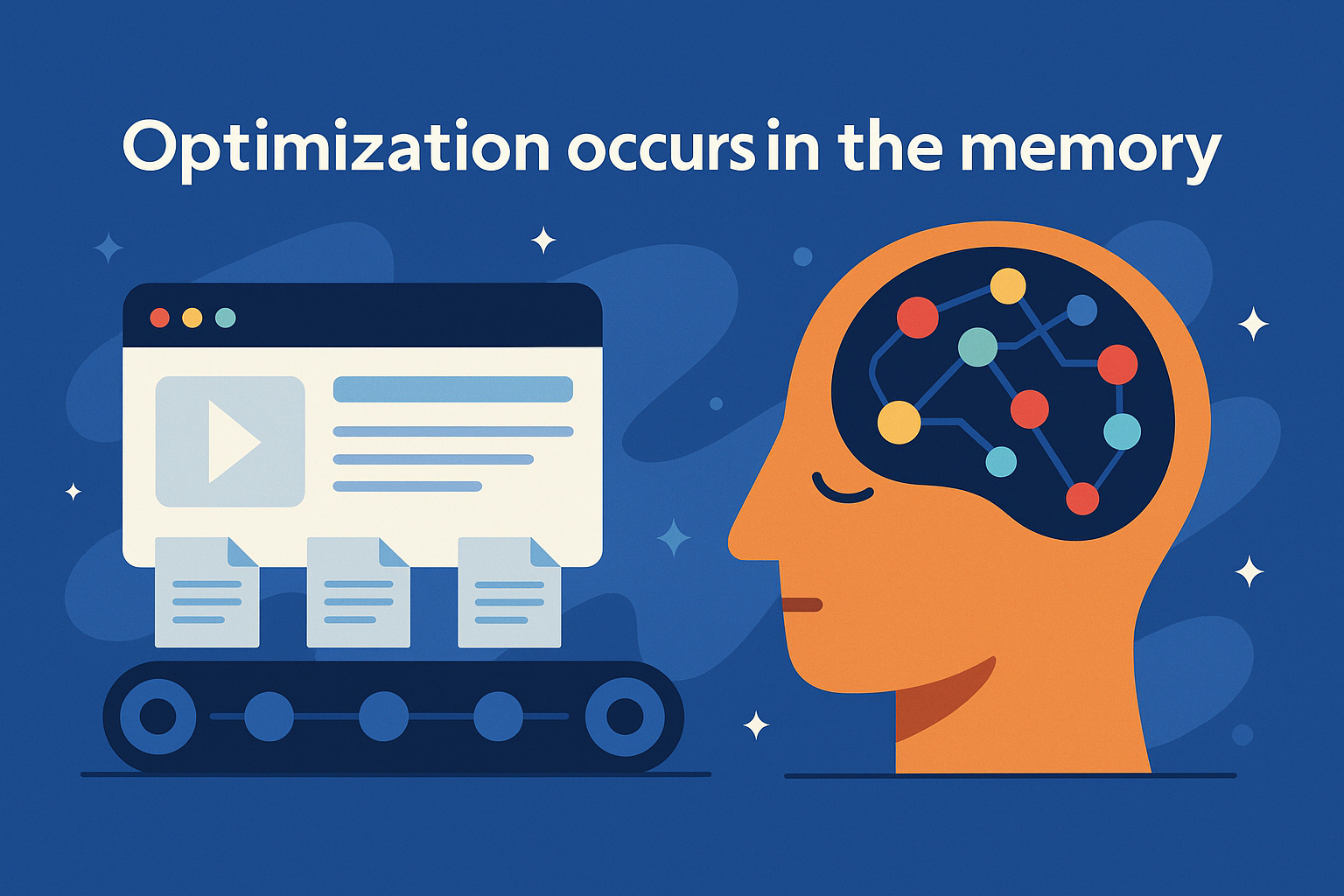Introduction: Models Don’t Respond — They Remember
When a user asks something in ChatGPT, Perplexity, or Google SGE, it looks as if the model generates the answer in real time. In reality, what it does is reconstruct meaning using different types of memory:
- Trained memory (the model’s weights),
- embeddings (vector representations),
- internal caches (short-term session memory),
- additional indexes and corpora (browsing, RAG, verified sources).
This is why real optimization — the kind that influences generative answers — does not happen in the visible text. It happens in how your domain becomes useful memory for the model.
What It Really Means to “Be in the Model’s Memory”
An LLM does not memorize your sentences or your headlines. It memorizes:
- conceptual patterns,
- relationships between ideas,
- thematic coherence,
- absence of contradictions,
- the overall topology of your domain.
When these signals are strong, your content leaves a semantic imprint the model naturally uses when reconstructing answers. In other words: it “remembers” you without remembering your words.
How to Influence the Model’s Internal Memories
The key to SEO for LLMs is not manipulating the surface of the text — it is designing content that becomes a stable node inside the model’s semantic space.
1. Semantic consistency across the entire domain
LLMs reward sites where concepts align:
- stable conceptual frameworks,
- consistent definitions,
- coherent technical language,
- no contradictions.
A domain that “sounds like one single mind” leaves a deeper imprint.
2. Density of conceptual links
This is not about internal linking — it’s about logical linking:
- concept A → context B → implication C,
- explicit relationships between ideas,
- definitions reused across content,
- topics converging into one general framework.
The more semantic connections you generate, the stronger your “space” becomes in the model’s memory.
3. Strategic repetition (not of keywords — of patterns)
The repetition that matters to models is not repeated words, but repeated structures. Examples:
- explaining the same concept from multiple angles,
- using examples that follow the same logic,
- maintaining fractal structures across articles.
Models identify these patterns easily and integrate them into their operational knowledge.
4. Cross-domain presence of the same concept
If a concept appears in:
- guides,
- comparisons,
- case studies,
- frameworks,
- FAQs,
the model interprets it as a pillar of your domain. Pillars are far more likely to appear in generative answers.
Why This Memory Weighs More Than Individual Content

Generative engines do not search for URLs — they search for semantic structures. So the question is no longer:
“Is this page well optimized?”
But:
“Does this domain leave a coherent, useful imprint in the model’s memory?”
If the answer is yes, you will appear in generative answers even for questions that do not match your traditional keywords.
How This Idea Connects With the Rest of the Series
Semantic memory is not an isolated concept — it is the consequence of all previous principles:
- Models don’t read pages (only patterns) → Article #1
- Content must compress well into vectors → Article #2
- Authority is a topology, not a ranking → Article #3
- Citations are a by-product → Article #4
- Epistemic fragility is detected and penalized → Article #5
- Fractality improves absorption → Article #6
Semantic memory is the emergent result of all of them.
Application in Advanced Content Strategies
In projects where SEO, AI, and automation intersect, memory-based optimization enables brands to:
- increase visibility in generative answers,
- build authority across multiple AI tools,
- influence the model’s conceptual reconstruction,
- strengthen domain coherence in vector space.
This chapter prepares the ground for the next one: why models distrust over-optimized content and reward semantic naturalness.
Conclusion: Being in the Model’s Memory Is Worth More Than Being in the Rankings
Keywords create visibility in search engines. Semantic patterns create visibility in generative models.
Your goal is not for the model to “read” your text, but to store it as a stable part of its conceptual map. When that happens, you appear even without trying.
The optimization of the future doesn’t happen on the surface of the text — it happens in the model’s deep memory.


